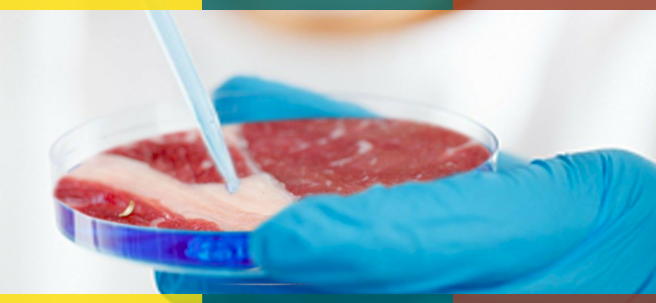
22 de February de 2021
Innovación
February 11, 2021. The National Rural Network (RRN) organized an exchange of experiences on livestock genetic improvement, focusing on the valorization of native Spanish breeds, research and innovation for genetic optimization, and the quality of derived products. The meeting was attended by 86 people with diverse profiles, including members of operational groups, companies, organizations and livestock associations, representatives of public administrations, research centers, and private companies from all over Spain. Participants shared information and experiences about their Operational Groups and/or Innovative Projects, including a project from the Horizon 2020 (H2020) Program, the European Union's research and innovation program.
- The objective of this event was to connect stakeholders in the livestock sector to reflect on and exchange best practices and innovative techniques to optimize genetic improvement in cattle, swine, sheep, and horses.
- During the meeting, eight innovative projects were presented in a wide variety of fields.
The key role of genetic improvement in increasing the competitiveness and sustainability of the Spanish livestock sector and its adaptation to the requirements and objectives of the future CAP was highlighted during the exchange. Genetics is part of the five pillars (health, nutrition, management, genetics, and reproduction) that livestock farmers have at their disposal to influence the productivity and profitability of their farms. Currently, genetic improvement is based on the analysis of scientific, genealogical, phenotypic, and, more recently, genomic information, which allows for fine-tuning the selection of breeding stock with optimal genetic qualities for efficient offspring.
Thematic work rooms
The knowledge exchange at this meeting took place in three virtual breakout rooms, where eight Operational Groups and Innovative Projects from the regional, national, and European levels were presented. Participants shared their experiences, progress, and results in the application of innovative technologies for livestock genetic improvement.
Room 1: Genetic improvement for the valorization of native Spanish breeds
Participants: MEJOREPROAVI, IBERDEFENSE , EXPORTGEN
Works and conclusions :
In this room, it has been demonstrated that genetic improvement is one of the most effective tools for revaluing native breeds and preserving those in danger of extinction. Native livestock breeds are part of the national heritage and genetic biodiversity; therefore, it is essential to ensure their survival and constant improvement to ensure they are competitive with other breeds. Innovation in genetics and the creation of channels for promoting and marketing pure Spanish breeds, both nationally and internationally, are key elements for raising awareness of these breeds and increasing their competitiveness in the market.
Room 2: Research and innovative techniques for genetic optimization
Participants: AFRIDEMA , SMARTER
Works and conclusions :
Both projects have highlighted how genomics , which involves the laboratory analysis of DNA markers, represents a valuable tool for optimizing and accelerating the efficient selection strategy for genetic values , provided quality genotypes are available. Therefore, it is essential to develop coordinated efforts with all stakeholders and include livestock farmers in genetic improvement programs. Emphasis has also been placed on training livestock farmers .
Room 3: Improving livestock genetics for higher quality derived products
Participants: Q-OLOR , REPROEQUI, FILOTAT
Works and conclusions :
In this room, various innovative techniques in genetic improvement and selection were presented to enhance the quality of derived products . For example, the Q-Olor project is using genetic markers to reduce the animal's sexual odor, which gives meat an undesirable flavor. In Asturias, the Reproequi project applies artificial insemination with evaluated and selected stallions to improve the competitiveness of the region's meat equine farms. Finally, the Filotat project applies digitalization to genetic improvement and the automation of production processes to improve the quality of wool and make it more competitive and recognized nationally and internationally.
What is innovation?
The National Rural Network promotes rural development accompanied by sustainable practices, supported by research, development, and innovation. Therefore, through co-financing from the European Agricultural Fund for Rural Development ( EAFRD ), we work with various rural stakeholders, organized around the framework of Operational Groups and Innovation Projects .
Operational Groups (OG) are groups of organizations, professionals, and experts who work together on a problem to be solved or an opportunity to be exploited through an innovation perspective. They implement the solutions obtained through a project. Their work is subsidized by the EAFRD (Federal Agricultural Development Fund) through Measure 16 of the Rural Development Programs (RDP). The calls for proposals and public spending allocated to these grants, which promote innovation , are part of the 2014-2020 rural development policy of the Ministry of Agriculture, Fisheries, and Food (MAPA) .
At the same time, other initiatives are being developed in the European context, with which synergies emerge in the commitment to innovation in rural areas. This is the case of the Horizon 2020 research framework program, which covers topics related to the agri-food and forestry sectors .
This meeting on improvements in farm management is part of a series of meetings on Operational Groups and Innovative Projects , which the National Rural Network is promoting to disseminate and share the results of R&D&I carried out in rural areas. All information can be found on the website and on the National Rural Network's social media channels: Twitter , Facebook , and YouTube , where you can enjoy this meeting openly.









